Good 44º super foggy Thanksgiving Morning.
I checked the downtown cam in Grants Pass yesterday morning about 9am and it was raining there already......
So then I went outside and it was just starting to rain here...
2 minutes later it had stopped and Dude wanted out to lay in the grass!
During the morning it started up again... and stopped, by 1pm it started again, and after a day of on and off rain we ended up with 1/2".
We stayed at 47º all day.
Throw Back Thursday...........
1980 Jerry helping his mom, Winona, carve the turkey....
Picture of the Day... LOL
Interesting about the dime...
The front (obverse) of the dime pictures a left-facing profile of Franklin Delano Roosevelt, the only four-term President of the United States of America. The reverse boasts an olive branch, a torch, and an oak branch, from left to right respectively. According to the U.S. Mint, the torch is a symbol of liberty, the olive branch is a symbol of peace, and the oak branch is a symbol of strength and independence. The Roosevelt dime has been minted since 1946, when it replaced the Liberty Head dime. As of 2014, the dime coin cost 3.91 cents to produce.
Crispy Parmesan Roast Potatoes
You know when you are making a grilled cheese sandwich and some cheese oozes out of the sandwich, cooks in the pan and gets all nice and crispy and all sorts of good? You know, the best part of the grilled cheese sandwich! Well that’s what these roasted potatoes are all about! Parmesan cheese is sprinkled into a baking pan and topped with the potatoes before roasting and the cheese cooks on the bottom of the baking dish just like on the bottom of the grilled cheese sandwiches pan and it gets golden brown and after letting it cool/set for a few minutes after pulling it out, it gets crispy! These roast potatoes are melt in your mouth soft and tender on the inside and crispy n the outside and just pack with melted cheese flavor! Yum! Step aside French fries, there a new king of potatoes in town!
- 1 tablespoon oil
- 1 cup Parmesan, grated
- 1 tablespoon oil
- 1 1/2 pounds small (1 to 1.5 inch diameter) potatoes, cut in half
- salt and pepper to taste
- Brush the oil on the bottom of a baking dish and sprinkle on the parmesan.
- Toss the potatoes in the oil, salt and pepper and press into the parmesan with the cut side down.
- Roast in a preheated 400º oven until the Parmesan is nice and golden brown and the potatoes are tender, about 20-25 minutes, before removing from the oven to let cool for 5 minutes and breaking them apart.
Option: Season the potatoes with your favorite spices or blend instead of just salt and pepper, like Cajun seasoning or taco seasoning or Italian seasoning.
Also, you can serve them with your favorite dipping sauce.
Special anniversary today, friends Steve (LASD ret) and Barbara Voors are celebrating anniversary number 43. HAPPY ANNIVERSARY KIDS! ♥♥
Steve and Jerry were BFFs and radio car partners at Temple Station.
Historically this date.....
1869 – In Dumbarton, Scotland, the clipper Cutty Sark is launched – one of the last clippers ever built, and the only one still surviving today.
1935 – The China Clipper, the first transpacific mail and passenger service, takes off from Alameda, California for its first commercial flight. It reaches its destination, Manila, a week later.
1963 – In Dallas, Texas, US President John F. Kennedy is assassinated and Texas Governor John B. Connally is seriously wounded. Suspect Lee Harvey Oswald is later captured and charged with the murder of both the President and police officer J. D. Tippit. Oswald is shot two days later by Jack Ruby while in police custody.
1995 – Toy Story is released as the first feature-length film created completely using computer-generated imagery.
And births this date include....
1899 – Hoagy Carmichael, American composer (d. 1981)
1921 – Rodney Dangerfield, American comedian (d. 2004)
1924 – Geraldine Page, American actress (d. 1987)
1932 – Robert Vaughn, American actor (d.2016)
1943 – Billie Jean King, American tennis player
1958 – Jamie Lee Curtis, American actress
1961 – Mariel Hemingway, American actress
Later when it was chair time, wine, and TV Dash was running around chasing his favorite squeaky ball and got tired so he laid in his bed by the TV. Bruiser jumped right up into my lap! Dash woke up and just gave him the "look"!!! LOL
All I know. Nuff said. Happy Thanksgiving! Ciao.
xo Sue Mom Bobo
Thanksgiving Day is observed each year in the United States on the fourth Thursday in November.
In 1621, the Plymouth colonists and Wampanoag Indians shared an autumn harvest feast that is acknowledged today as one of the first Thanksgiving celebrations in the colonies. For more than two centuries, days of thanksgiving were celebrated by individual colonies and states. It wasn’t until 1863, in the midst of the Civil War, that President Abraham Lincoln proclaimed a national Thanksgiving Day to be held each November.
HOW TO OBSERVE
In many American households, the Thanksgiving celebration has lost much of its original religious significance; instead, it now centers on cooking and sharing a bountiful meal with family and friends. Turkey, a Thanksgiving staple so ubiquitous it has become all but synonymous with the holiday, may or may not have been on offer when the Pilgrims hosted the inaugural feast in 1621. Today, however, nearly 90 percent of Americans eat the bird—whether roasted, baked or deep-fried—on Thanksgiving, according to the National Turkey Federation. Other traditional foods include stuffing, mashed potatoes, cranberry sauce and pumpkin pie. Volunteering is a common Thanksgiving Day activity, and communities often hold food drives and host free dinners for the less fortunate.
Parades have also become an integral part of the holiday in cities and towns across the United States. Presented by Macy’s department store since 1924, New York City’s Thanksgiving Day parade is the largest and most famous, attracting some 2 to 3 million spectators along its 2.5-mile route and drawing an enormous television audience. It typically features marching bands, performers, elaborate floats conveying various celebrities and giant balloons shaped like cartoon characters.
Beginning in the mid-20th century and perhaps even earlier, the president of the United States has “pardoned” one or two Thanksgiving turkeys each year, sparing the birds from slaughter and sending them to a farm for retirement. A number of U.S. governors also perform the annual turkey pardoning ritual.
HISTORY
THANKSGIVING AT PLYMOUTH
In September 1620, a small ship called the Mayflower left Plymouth, England, carrying 102 passengers—an assortment of religious separatists seeking a new home where they could freely practice their faith and other individuals lured by the promise of prosperity and land ownership in the New World. After a treacherous and uncomfortable crossing that lasted 66 days, they dropped anchor near the tip of Cape Cod, far north of their intended destination at the mouth of the Hudson River. One month later, the Mayflower crossed Massachusetts Bay, where the Pilgrims, as they are now commonly known, began the work of establishing a village at Plymouth.
Throughout that first brutal winter, most of the colonists remained on board the ship, where they suffered from exposure, scurvy and outbreaks of contagious disease. Only half of the Mayflower’s original passengers and crew lived to see their first New England spring. In March, the remaining settlers moved ashore, where they received an astonishing visit from an Abenaki Indian who greeted them in English. Several days later, he returned with another Native American, Squanto, a member of the Pawtuxet tribe who had been kidnapped by an English sea captain and sold into slavery before escaping to London and returning to his homeland on an exploratory expedition. Squanto taught the Pilgrims, weakened by malnutrition and illness, how to cultivate corn, extract sap from maple trees, catch fish in the rivers and avoid poisonous plants. He also helped the settlers forge an alliance with the Wampanoag, a local tribe, which would endure for more than 50 years and tragically remains one of the sole examples of harmony between European colonists and Native Americans.
In November 1621, after the Pilgrims’ first corn harvest proved successful, Governor William Bradford organized a celebratory feast and invited a group of the fledgling colony’s Native American allies, including the Wampanoag chief Massasoit. Now remembered as American’s “first Thanksgiving”—although the Pilgrims themselves may not have used the term at the time—the festival lasted for three days. While no record exists of the historic banquet’s exact menu, the Pilgrim chronicler Edward Winslow wrote in his journal that Governor Bradford sent four men on a “fowling” mission in preparation for the event and that the Wampanoag guests arrived bearing five deer. Historians have suggested that many of the dishes were likely prepared using traditional Native American spices and cooking methods. Because the Pilgrims had no oven and the Mayflower’s sugar supply had dwindled by the fall of 1621, the meal did not feature pies, cakes or other desserts, which have become a hallmark of contemporary celebrations.
This history of Thanksgiving provided by www.History.com. For more information on Thanksgiving, go to http://www.history.com/topics/thanksgiving/history-of-thanksgiving.
Pilgrims held their second Thanksgiving celebration in 1623 to mark the end of a long drought that had threatened the year’s harvest and prompted Governor Bradford to call for a religious fast. Days of fasting and thanksgiving on an annual or occasional basis became common practice in other New England settlements as well. During the American Revolution, the Continental Congress designated one or more days of thanksgiving a year, and in 1789 George Washington issued the first Thanksgiving proclamation by the national government of the United States; in it, he called upon Americans to express their gratitude for the happy conclusion to the country’s war of independence and the successful ratification of the U.S. Constitution. His successors John Adams and James Madison also designated days of thanks during their presidencies.
In 1817, New York became the first of several states to officially adopt an annual Thanksgiving holiday; each celebrated it on a different day, however, and the American South remained largely unfamiliar with the tradition. In 1827, the noted magazine editor and prolific writer Sarah Josepha Hale—author, among countless other things, of the nursery rhyme “Mary Had a Little Lamb”—launched a campaign to establish Thanksgiving as a national holiday. For 36 years, she published numerous editorials and sent scores of letters to governors, senators, presidents and other politicians. Abraham Lincoln finally heeded her request in 1863, at the height of the Civil War, in a proclamation entreating all Americans to ask God to “commend to his tender care all those who have become widows, orphans, mourners or sufferers in the lamentable civil strife” and to “heal the wounds of the nation.” He scheduled Thanksgiving for the final Thursday in November, and it was celebrated on that day every year until 1939 when Franklin D. Roosevelt moved the holiday up a week in an attempt to spur retail sales during the Great Depression. Roosevelt’s plan, known derisively as Franksgiving, was met with passionate opposition, and in 1941 the president reluctantly signed a bill making Thanksgiving the fourth Thursday in November.








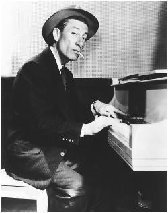
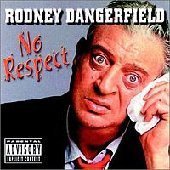
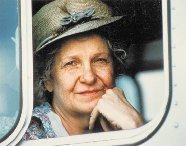
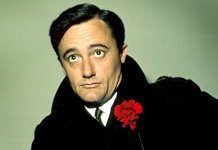
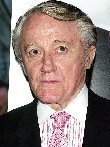

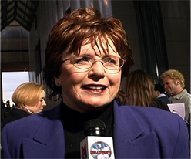






No comments:
Post a Comment